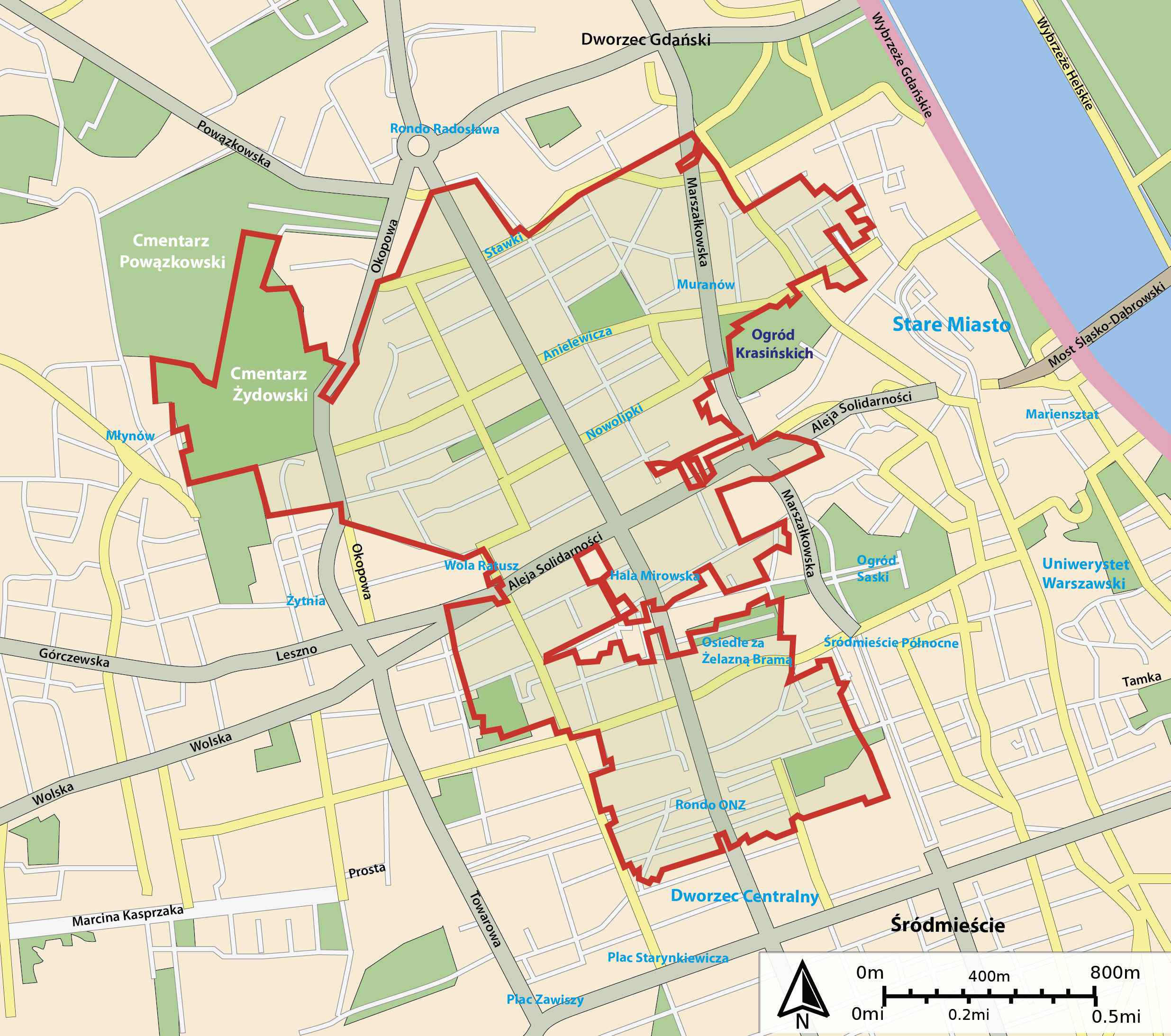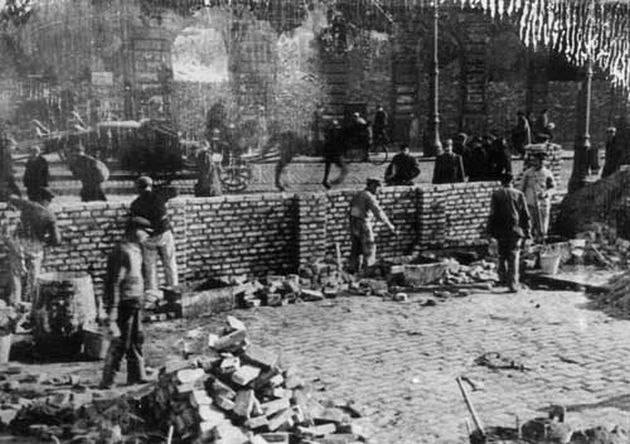The idea of creating a closed Jewish district in Warsaw was already considered in the autumn of 1939. It was not realized then due to the plans to concentrate Warsaw Jews in the Lublin district. When the plan turned out to be unrealistic, as the idea to send all the Jews to Madagascar, the Germans started searching for a place in Warsaw where they could create a Jewish ghetto. The decision fell to establish the ghetto in the northwest part of the Śródmieście district, where since the 19thcentury the vast majority of Warsaw Jews lived. This entire part of the city was deemed to be an ‘isolated epidemic area’ and the German authorities warned that people remaining in the neighbourhood risked contracting typhus. Therefore, in April 1940 they built the first walls to isolate the Jews from rest of the city’s inhabitants. Surrounded by walls, this city quarter to a large extant corresponded to the borders of the future ghetto.
The ghetto was officially founded on 2 October 1940 by a decree of Warsaw District Governor Ludwig Fischer. The Jewish population was ordered to resettle in the ghetto within a few weeks, immediately after the eviction of the Polish inhabitants from the designated area. Thus, 138,000 Jews and almost as many Poles (113,000) were forced to leave their homes and resettle.



